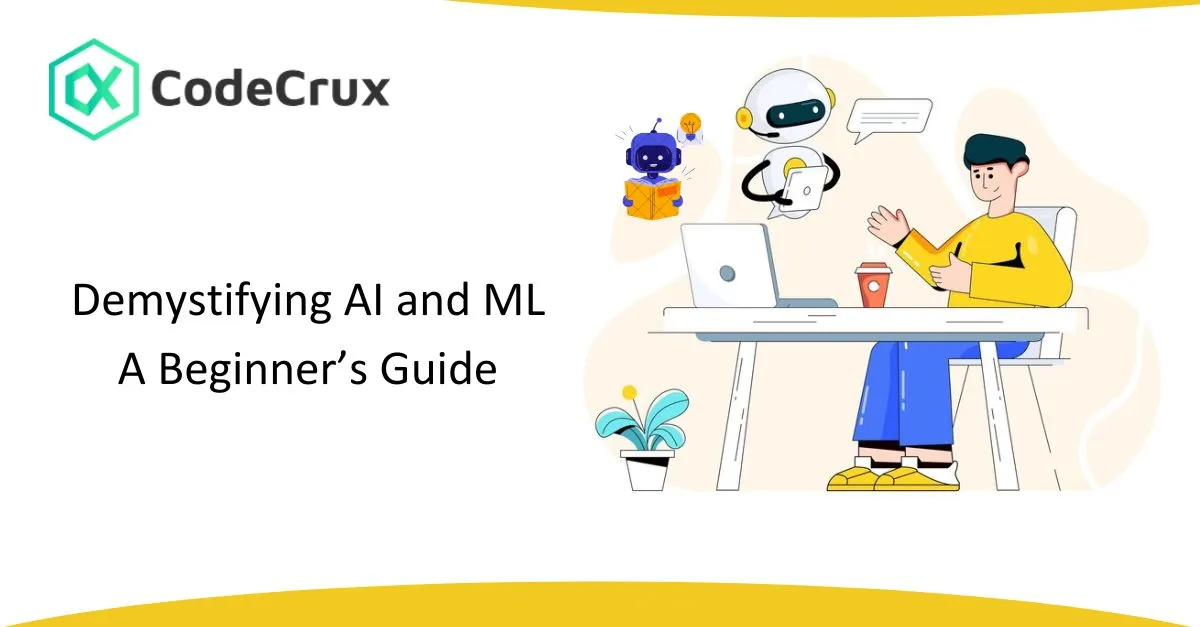Demystifying AI and ML A Beginner’s Guide

Artificial Intelligence (AI) and Machine Learning (ML) have become buzzwords across industries, reshaping how businesses operate and people interact with technology. Yet, for many, these terms remain shrouded in mystery. What do they really mean? How do they work? And why are they so important? This guide aims to demystify AI and ML, making these concepts accessible to beginners.
What is Artificial Intelligence?
At its core, Artificial Intelligence refers to the simulation of human intelligence in machines. These systems are designed to perform tasks that typically require human intelligence, such as:
-
Understanding natural language (e.g., virtual assistants like Alexa or Siri).
-
Recognizing patterns (e.g., facial recognition in photos).
-
Making decisions (e.g., recommendation engines on Netflix).
AI can be categorized into two types:
-
Narrow AI: Specializes in specific tasks, like language translation.
-
General AI: Aims to mimic human intelligence broadly (still largely theoretical).
What is Machine Learning?
Machine Learning is a subset of AI that focuses on teaching machines to learn from data. Instead of programming rules for every task, ML algorithms enable systems to identify patterns and improve performance over time without explicit instructions. For example:
-
Spam filters in email systems learn to identify and block junk mail.
-
Recommendation engines suggest products based on your browsing history.
How Do AI and ML Work?
AI and ML systems are built on a foundation of data, algorithms, and computational power. Here’s a simplified breakdown:
-
Data Collection: Systems require large datasets to learn and make predictions. For instance, an image recognition model needs thousands of labeled pictures.
-
Training the Model: Using ML algorithms, the system analyzes the data to identify patterns or rules.
-
Testing and Validation: The model is tested on new data to ensure accuracy and reliability.
-
Deployment: Once trained, the model is integrated into applications to perform real-world tasks.
Popular algorithms used in ML include:
-
Supervised Learning: Learning from labeled data (e.g., predicting house prices).
-
Unsupervised Learning: Finding patterns in unlabeled data (e.g., customer segmentation).
-
Reinforcement Learning: Learning through trial and error (e.g., game-playing AI).
Real-Life Applications of AI and ML
AI and ML are transforming various domains. Here are some practical applications:
-
Healthcare: Early detection of diseases like cancer through image analysis.
-
Finance: Fraud detection and automated trading systems.
-
Retail: Personalized shopping experiences and inventory optimization.
-
Transportation: Autonomous vehicles and route optimization.
-
Education: Adaptive learning platforms that cater to individual student needs.
Why Are AI and ML Important?
The significance of AI and ML lies in their potential to:
-
Enhance Efficiency: Automate repetitive tasks, saving time and resources.
-
Improve Accuracy: Reduce human error in data-driven decisions.
-
Drive Innovation: Enable breakthroughs in fields like medicine, environmental science, and robotics.
Challenges and Ethical Considerations
While AI and ML offer immense possibilities, they also raise challenges and ethical concerns:
-
Bias in Algorithms: Ensuring fairness in AI systems.
-
Privacy Issues: Protecting sensitive data from misuse.
-
Job Displacement: Addressing the impact of automation on employment.
-
Transparency: Making AI decisions explainable and accountable.
How to Get Started with AI and ML
For beginners looking to explore AI and ML:
-
Learn the Basics: Familiarize yourself with fundamental concepts through free resources like Coursera, edX, and YouTube tutorials.
-
Experiment with Tools: Use beginner-friendly platforms like Google Colab or Microsoft Azure ML Studio.
-
Practice with Projects: Build simple projects like sentiment analysis or image classification to gain hands-on experience.
-
Join Communities: Engage with AI and ML communities on platforms like Reddit or GitHub.
Best AI and ML Company In Hyderabad As AI and ML continue to evolve, their influence will only grow. Understanding these technologies is no longer optional — it’s essential for anyone looking to thrive in the modern world. By grasping the basics today, you position yourself to harness their transformative power tomorrow.
Are you ready to embark on your AI and ML journey? Let’s demystify the future together!